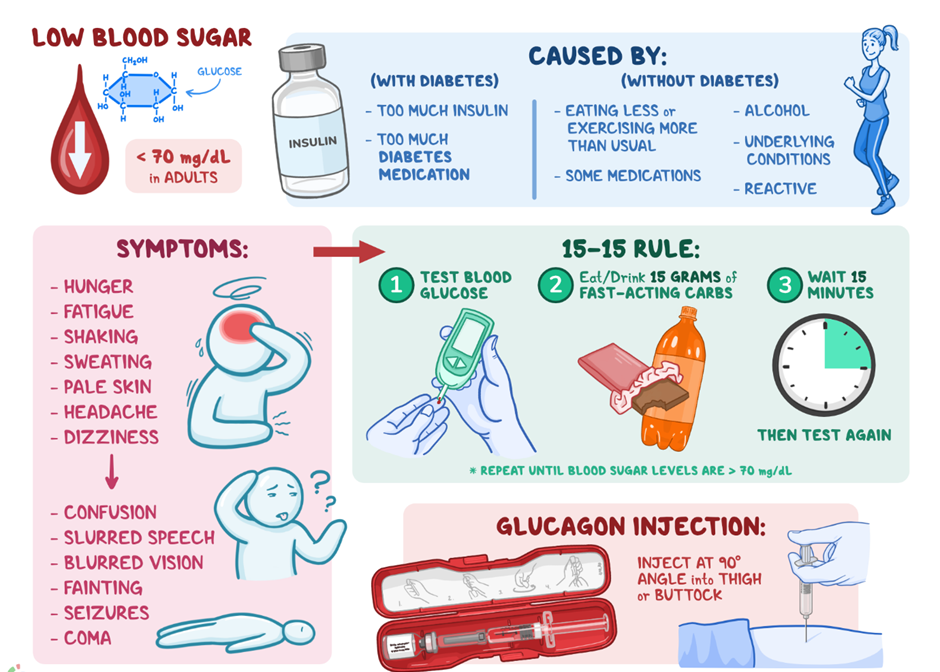A nurse is reinforcing teaching about manifestations of hypoglycemia with an adolescent who has type 1 diabetes mellitus. Which of the following manifestations should the nurse include in the teaching?
Diminished reflexes
Rapid respirations
Acetone breath
Headache
The Correct Answer is D
A. Diminished reflexes:
Explanation: Diminished reflexes are not typically associated with hypoglycemia. Instead, hypoglycemia may cause hyperactive reflexes or tremors.
B. Rapid respirations:
Explanation: Rapid respirations are not a common manifestation of hypoglycemia. In hypoglycemia, the body might respond with shallow, rapid breathing or hyperventilation.
C. Acetone breath:
Explanation: Acetone breath, often described as fruity or sweet, is associated with diabetic ketoacidosis (DKA), which is a complication of hyperglycemia rather than hypoglycemia.
D. Headache:
Explanation: Headache is a common manifestation of hypoglycemia. It can occur as a result of decreased glucose levels affecting the brain.

Nursing Test Bank
Naxlex Comprehensive Predictor Exams
Related Questions
Correct Answer is D
Explanation
A. Bradycardia:
Low blood sugar levels can lead to bradycardia, a slower than normal heart rate.
B. Flushed skin:
Typically, low blood sugar levels might cause pallor or cool, clammy skin, rather than flushing.x
C. Decreased appetite:
Low blood sugar might result in increased hunger or a feeling of needing to eat rather than decreased appetite.
D. Tremors:
Hypoglycemia often presents with symptoms like tremors or shakiness due to the body's response to low blood sugar.
Correct Answer is B
Explanation
A. BUN (Blood Urea Nitrogen):
Explanation: BUN is a measure of kidney function and hydration status. It is not typically elevated in response to a localized infection like a pressure ulcer.
B. WBC count (White Blood Cell count):
Explanation: An elevation in the WBC count is a common indicator of infection. Increased white blood cells suggest the body's immune response to an infection.
C. Potassium:
Explanation: Potassium levels are not typically used to indicate the presence of infection. Elevated potassium may be seen in conditions affecting kidney function.
D. RBC count (Red Blood Cell count):
Explanation: The RBC count is not a specific marker for infection. It is more related to issues such as anemia or oxygen-carrying capacity.
Whether you are a student looking to ace your exams or a practicing nurse seeking to enhance your expertise , our nursing education contents will empower you with the confidence and competence to make a difference in the lives of patients and become a respected leader in the healthcare field.
Visit Naxlex, invest in your future and unlock endless possibilities with our unparalleled nursing education contents today
Report Wrong Answer on the Current Question
Do you disagree with the answer? If yes, what is your expected answer? Explain.
Kindly be descriptive with the issue you are facing.
